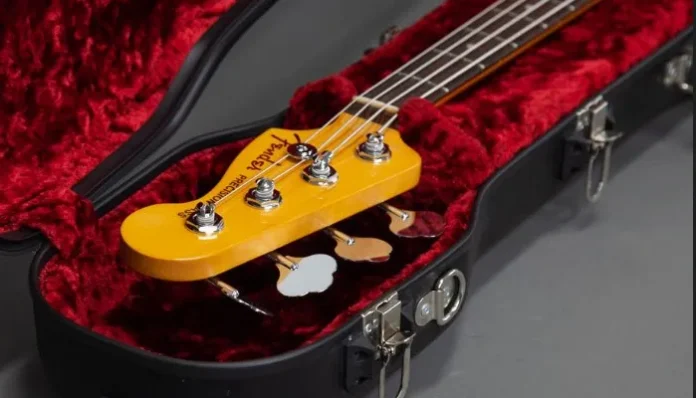Buying a second-hand bass guitar online can be an exciting way to find great deals and unique instruments. However, it’s important to know what to look for to ensure you get the right instrument and avoid potential pitfalls. Here’s a simple guide with tips to help you make the best purchase.
1. Know what you need
Before jumping into online marketplaces, take a moment to determine what you’re looking for:
- Type of Bass: Do you prefer a 4-string, 5-string, or fretless bass?
- Style: What style of music do you play? Although most basses handle all styles, different genres may call for specific tones or features, like active or passive basses.
- Budget: Set a clear budget and stick to it. Second-hand doesn’t mean dirt-cheap, but you can often find excellent value. Don’t let yourself get carried away in online bidding wars
2. Where to look for second-hand basses
We have collected some of the best online platforms to find second-hand bass guitars in our article
3. Check the seller’s reputation
- Reviews and Ratings: If the platform has a review system, look for sellers with good feedback.
- Communication: A trustworthy seller should respond promptly and provide clear answers to your questions.
- Avoid Red Flags: Be cautious of sellers who seem pushy, reluctant to share details, or have vague descriptions.
4. Inspect the listing closely
- Photos: Look for clear, high-quality images showing the entire bass and close-ups of key areas (headstock, body, fretboard, electronics, etc.). Ask for more photo’s if needed. If the seller is serious, this will be no problem. If they don’t want to do that, be careful.
- Description: The listing should include details about the make, model, year, condition, and any modifications.
- Price Comparison: Research the model to see if the asking price aligns with its market value. One good resource for that is Reverb.com that has many basses listed for reference. Please note that prices on Reverb.com tend to be a little higher than classified sites since they charge sellers a fee.
5. Ask the right questions
- Has the bass been serviced or repaired?
- Are there any issues with the electronics, neck, or hardware?
- Are all the original parts intact, or have there been modifications?
- Why is the seller parting with it?
- Can the bass be returned if it doesn’t match the description?
6. Avoid scams
- Stay Local When Possible: Meeting in person allows you to inspect the bass before committing.
- Payment Safety: Use secure payment methods like PayPal or direct bank transfer. But avoid wire transfers or paying in cash unless meeting in person.
- Too Good to Be True?: If the deal seems suspiciously cheap, proceed with caution.
7. Inspect the instrument (when meeting in person)
- Neck: Check for straightness and signs of warping.
- Fretboard: Look for worn frets or buzzing issues.
- Body: Inspect for scratches, cracks, or other damage.
- Electronics: Plug in the bass and test all pickups, knobs, and switches.
- Hardware: Ensure the tuners, bridge, and strap buttons are in good condition.
8. Negotiate wisely
- If you notice minor issues, use them as a reason to negotiate a lower price.
- Be polite and reasonable; sellers are often willing to meet halfway.
9. Shipping and delivery
- Packaging: Ensure the seller will ship the bass in a proper case or with plenty of padding.
- Tracking: Always request a tracking number for the shipment.
- Insurance: Insist on shipping insurance to protect against damage or loss in transit.
10. Trust your gut
If something feels off during the process, it’s okay to walk away. There are plenty of basses out there, and it’s better to wait than risk a bad deal.

